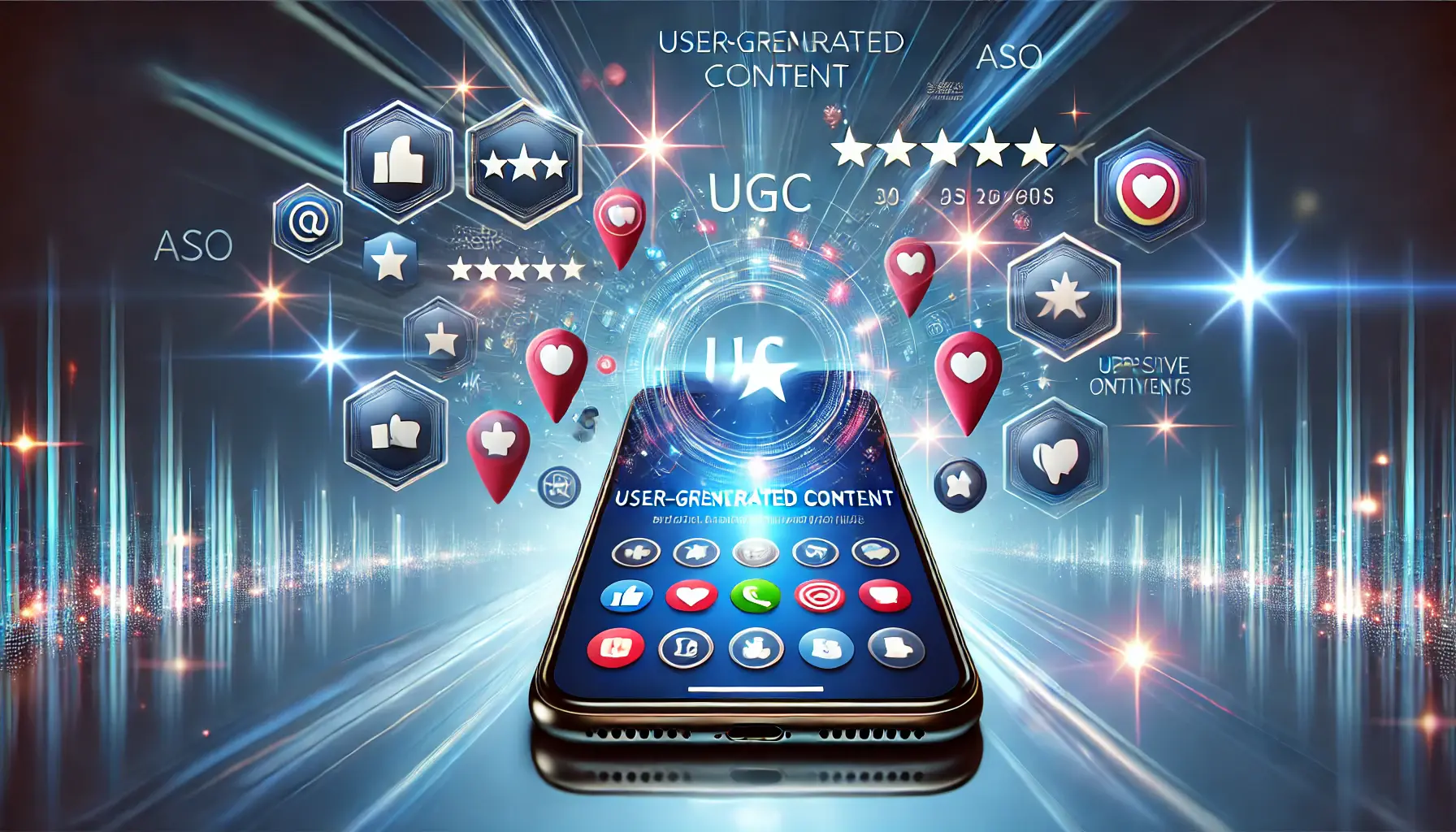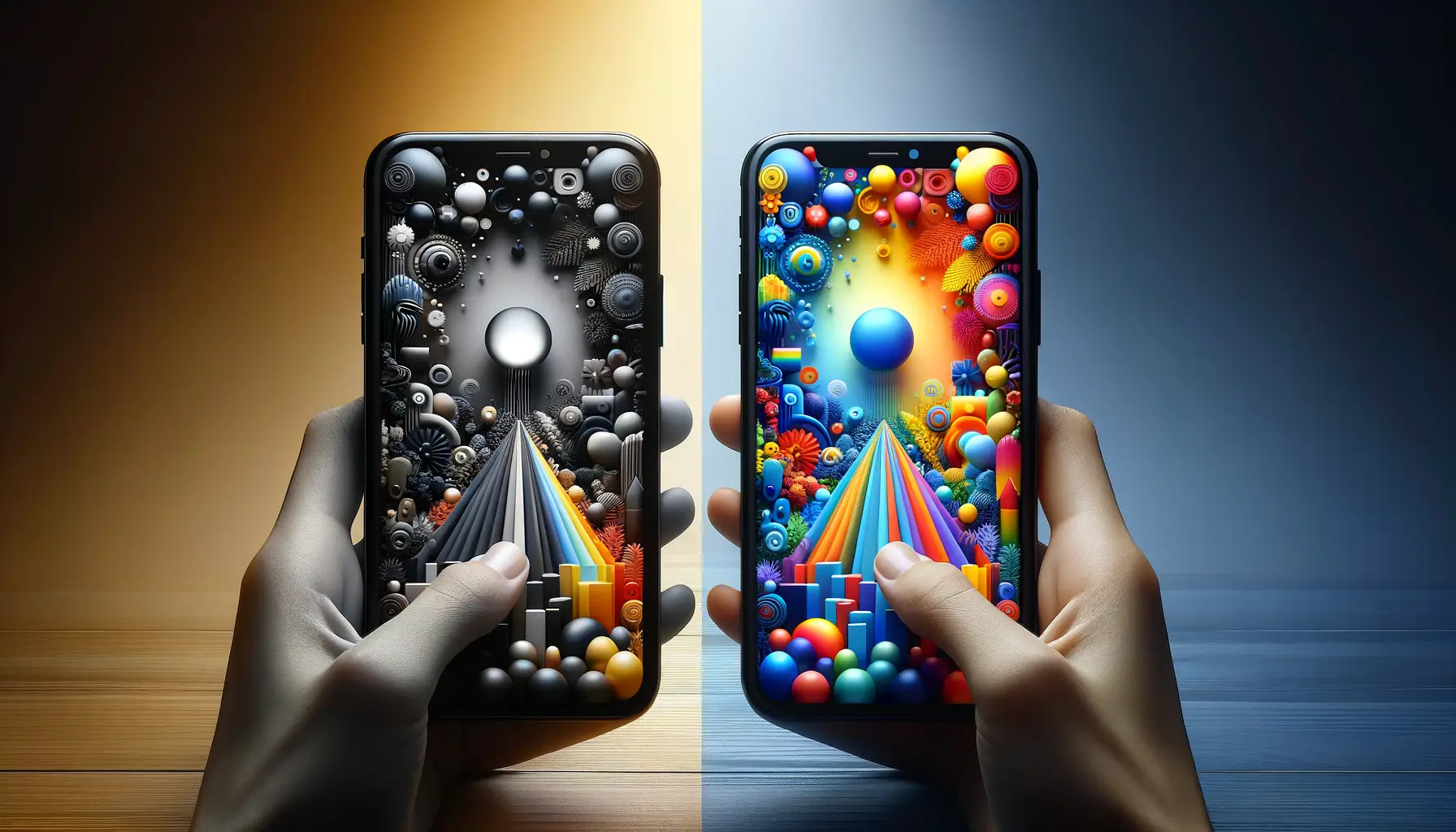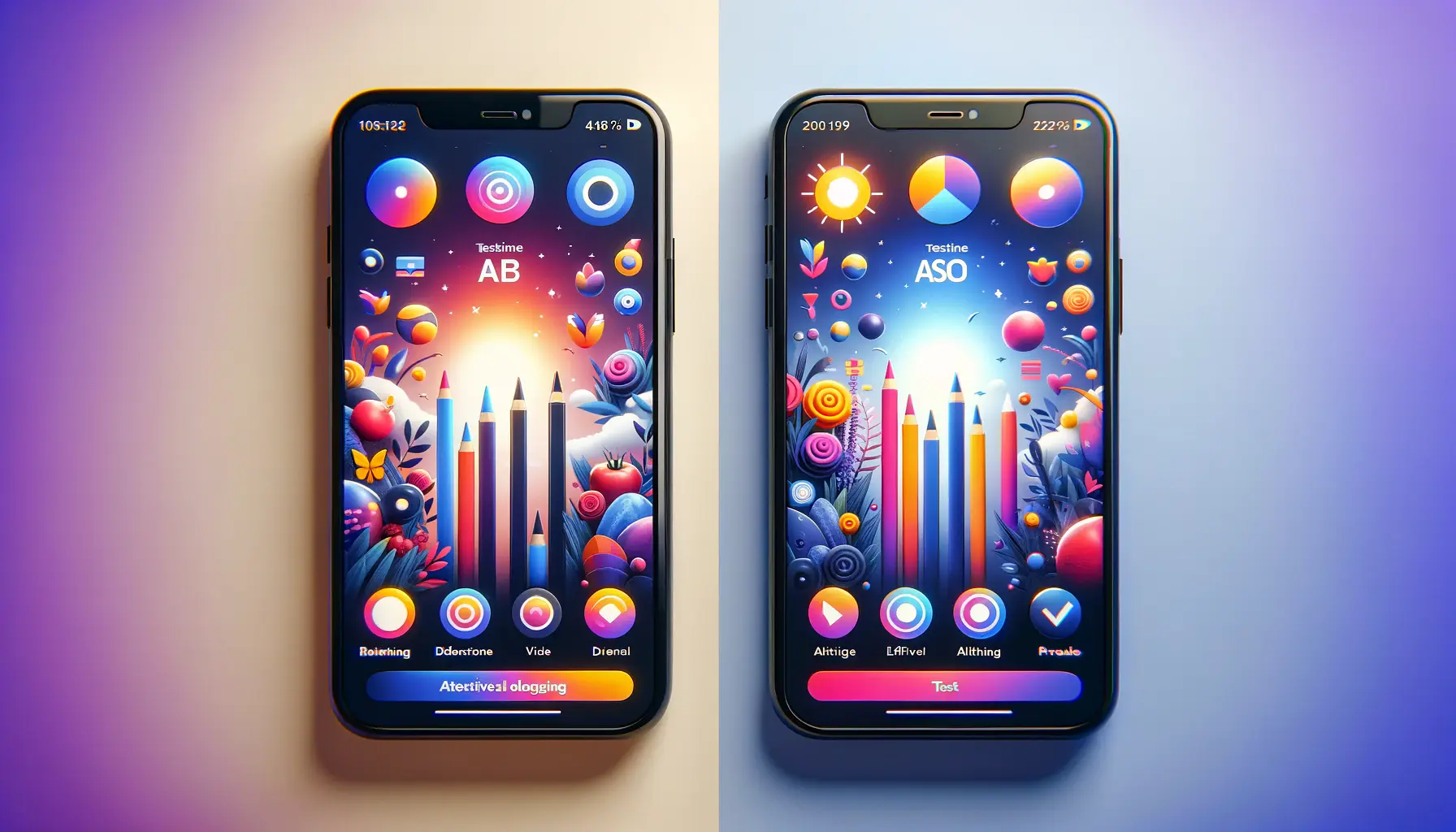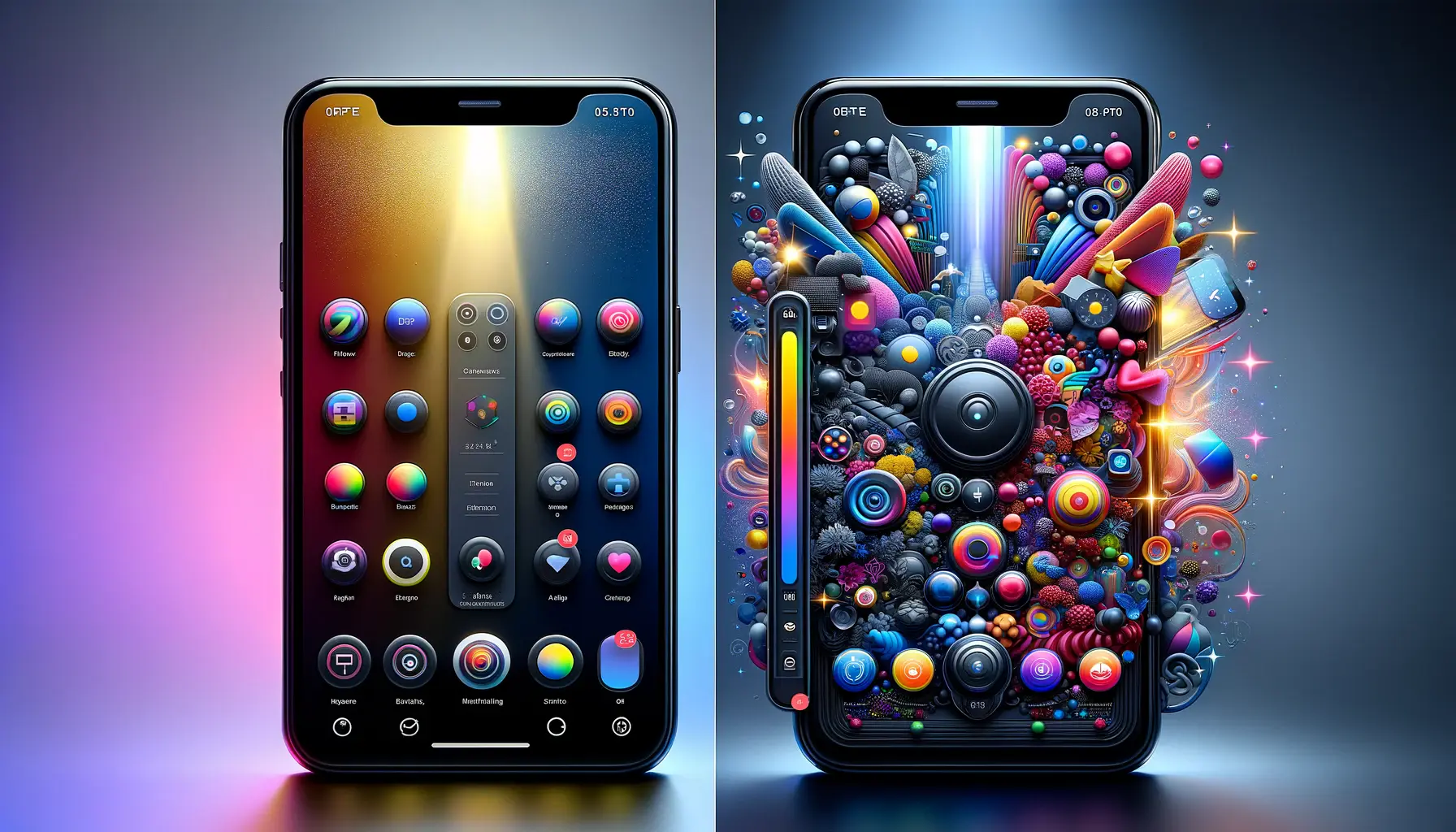In the competitive world of mobile apps, standing out in the app store is more crucial than ever.
The art of storytelling through App Store Optimization (ASO) screenshots plays a pivotal role in capturing the attention of potential users.
These visual elements not only serve as a first impression but also narrate the unique story of an app, conveying its essence, functionality, and benefits in mere seconds.
By mastering this art, developers and marketers can significantly increase the chances of app downloads, leveraging the visual appeal to communicate directly with their audience.
Understanding the strategic use of ASO screenshots requires diving deep into the nuances of visual storytelling, where every pixel and every frame tells a part of the story.
The main keyword, “art,” in this context, embodies the creativity and finesse needed to design compelling screenshots.
As an integral component of the ASO strategy, screenshots must be crafted with the intent to inform, entice, and convince users of the value an app brings to their digital lives.
This article explores the multifaceted approach to creating captivating screenshots, ensuring they speak volumes about the app’s value proposition and stand out in the vast sea of digital offerings.
- Understanding the Basics of ASO Screenshots
- The Role of Storytelling in ASO Screenshots
- Optimizing Screenshots for Different Platforms
- Maximizing Visibility Through Keyword Optimization
- Leveraging Social Proof in Screenshots
- Utilizing Color Psychology in Screenshots
- Testing and Iterating for Success
- Conclusion: Mastering the Craft of ASO Screenshots
- FAQs: Navigating the Art of ASO Screenshots
Understanding the Basics of ASO Screenshots
Before diving into the complexities of visual storytelling, it’s crucial to grasp the foundational elements of ASO screenshots.
These images are not just decorative additions to an app’s listing; they are strategic marketing tools designed to attract, engage, and convert potential users.
ASO screenshots should be seen as the visual elevator pitch of an app, highlighting its core features, user interface, and overall experience in a compelling and digestible format.
There’s an art to selecting and designing these images that goes beyond mere aesthetics.
Each screenshot needs to convey a specific message, showcase a benefit, or demonstrate a feature that sets the app apart from its competitors.
The key is to balance information and inspiration, providing potential users with enough context to understand the app’s value while sparking curiosity and interest.
Optimizing Screenshot Design for Maximum Impact
When it comes to designing ASO screenshots, several factors come into play.
First and foremost, clarity and focus are essential.
Users should be able to grasp what the app does at a glance.
This means prioritizing clean, readable visuals and avoiding clutter.
Utilizing high-quality images, contrasting colors for text and background, and clear, descriptive captions can significantly enhance the readability and effectiveness of your screenshots.
Moreover, the sequence in which screenshots are presented matters.
The first few images should capture the most critical aspects of the app, as these are the most likely to be viewed by users scrolling through the app store.
Later screenshots can delve into more detailed features or use cases, supporting the initial claims made by the first few images.
Remember, the goal of ASO screenshots is not just to show what your app looks like but to tell a story that resonates with your target audience.
By meticulously planning and designing each ASO screenshot, developers and marketers can create a compelling visual narrative that guides potential users through the app’s key features and benefits, leading to increased downloads and engagement.
The Role of Storytelling in ASO Screenshots
Storytelling through ASO screenshots transcends mere visual appeal, embedding a narrative that potential users can connect with on an emotional level.
This strategy leverages the human inclination towards stories to illustrate the app’s impact on users’ lives, making the application not just seen but felt.
By effectively using storytelling, developers can guide the audience through a journey, showcasing how the app solves problems, enhances daily routines, or brings joy.
Implementing storytelling into ASO screenshots involves more than just displaying features.
It’s about creating a narrative that aligns with the user’s needs, desires, and challenges, presenting the app as the hero that comes to the rescue.
Here’s how to achieve this:
- Introduce the Setting: Begin your visual story by establishing the context. Use the first screenshot to highlight a common problem or need your target audience faces, setting the stage for your app’s entry.
- Showcase the Journey: Following screenshots should depict how the app addresses these challenges, illustrating the journey from problem to solution. Highlight key functionalities and how they make users’ lives easier or more enjoyable.
- Highlight the Outcome: Conclude with the positive impact of using the app. This can be a depiction of the app’s end results or benefits, showing users what they can achieve or experience.
Capturing Emotions and Experiences
Emotionally resonant screenshots can significantly boost the effectiveness of your storytelling.
By including images that evoke feelings of happiness, relief, or excitement, you can create a stronger connection with your audience.
For example, showing a user achieving a goal using the app or enjoying a moment of relaxation thanks to its features can communicate the app’s value more powerfully than any list of features could.
Incorporating real-life scenarios or relatable experiences within your screenshots can also enhance the narrative, making it easier for users to see themselves benefiting from the app.
This approach not only informs but also inspires users to take action, driven by the desire to experience the outcomes depicted in your visuals.
Consider using a mix of in-app screenshots and lifestyle imagery to tell a more comprehensive story. This combination can effectively showcase the app’s functionality while highlighting its impact on users’ lives.
Ultimately, the art of storytelling through ASO screenshots is about weaving a narrative that captivates and compels the audience, guiding them towards making the decision to download and engage with your app.
By focusing on the user’s journey and the emotional and practical benefits of your application, you can create a compelling case that stands out in the crowded app marketplace.
Optimizing Screenshots for Different Platforms
While the core principles of crafting engaging ASO screenshots remain consistent, the approach can vary significantly between platforms like the Apple App Store and Google Play Store.
Each platform has its own set of guidelines, user expectations, and display peculiarities, necessitating a tailored strategy to maximize the impact of your screenshots.
Understanding the nuances of each platform enables developers and marketers to optimize their ASO screenshots accordingly, ensuring they not only comply with technical requirements but also resonate with the target audience specific to each store.
Apple App Store Considerations
- Emphasize Simplicity and Quality: Apple users often expect a high level of polish and simplicity. Your screenshots should reflect these expectations, focusing on clean designs and highlighting the app’s sleek interface and core functionalities.
- Utilize Portrait Orientation: The App Store generally favors portrait screenshots, which display more effectively on users’ devices during browsing. Prioritize showcasing your app’s key features and benefits in this format, especially for the first few screenshots.
- Leverage Video Previews: While not a screenshot per se, Apple’s App Store allows developers to include a short video preview. This can complement your screenshots by providing a dynamic demonstration of your app in action.
Google Play Store Strategies
- Flexible Orientation: Google Play Store is more flexible regarding screenshot orientation. Depending on your app’s usage, landscape screenshots may be more effective, especially for games or media apps that naturally operate in landscape mode.
- Highlight Android Experience: Ensure your screenshots reflect the Android user interface, emphasizing navigation and features unique to the Android version of your app.
- Use Graphic Assets Wisely: Google Play allows for a feature graphic, which is prominently displayed at the top of your listing. This graphic, along with your screenshots, should form a cohesive visual story that entices users to download.
By tailoring your ASO screenshot strategy to align with the specific characteristics and user expectations of each platform, you can significantly enhance the visibility and appeal of your app.
This requires not just creative design but also strategic planning and a deep understanding of the platform’s guidelines and the preferences of its user base.
The optimization of ASO screenshots for different platforms is a critical step in ensuring your app’s success. Tailor each visual element to meet platform-specific guidelines and user expectations, maximizing downloads and engagement.
Incorporating these platform-specific considerations into your ASO strategy allows you to more effectively communicate your app’s value proposition, driving higher conversion rates and fostering a stronger connection with potential users.
Maximizing Visibility Through Keyword Optimization
Incorporating strategic keywords into your ASO screenshots is a nuanced but powerful way to boost your app’s visibility in the app store.
Keywords play a crucial role in ASO, influencing how your app ranks in search results and how easily potential users can discover it.
While the primary focus of screenshots is visual, integrating text elements with optimized keywords can enhance your app’s searchability and appeal.
Keyword optimization in screenshots isn’t about stuffing as many keywords as possible into image captions.
Instead, it’s about strategically selecting and incorporating keywords that are relevant to your app’s features, benefits, and the user queries it answers.
This requires a balance between visual storytelling and textual clarity, ensuring that the keywords naturally fit within the narrative your screenshots convey.
Identifying and Integrating Relevant Keywords
- Research and Select: Begin by researching keywords relevant to your app’s functionality, audience, and industry. Tools like keyword planners and competitor analysis can help identify the terms your target users are searching for.
- Natural Integration: Incorporate these keywords into your screenshot captions or descriptions in a way that feels natural and enhances the narrative. Each keyword should complement the visual element it accompanies, adding context and clarity.
- Focus on Benefits and Features: Use keywords to highlight the unique benefits and features of your app. This not only helps with keyword optimization but also ensures that users understand the value proposition of your app at a glance.
Optimizing for User Intent
Understanding user intent is crucial in keyword optimization.
The keywords you choose should align with what users are looking for in an app like yours.
Whether they’re seeking entertainment, productivity, health, or education, the language you use in your screenshots should reflect the solutions your app provides to their needs.
This alignment between user intent and your chosen keywords can significantly impact the effectiveness of your ASO strategy, making your app more discoverable to those who are most likely to download and engage with it.
True keyword optimization is about more than just visibility; it’s about connecting with your target audience by speaking their language and answering their needs through your app’s visual and textual narrative.
By meticulously researching and integrating relevant keywords into your ASO screenshots, you can significantly enhance your app’s visibility in search results, attracting a more engaged and relevant audience to your listing.
Leveraging Social Proof in Screenshots
Integrating social proof into ASO screenshots is an effective strategy to build trust and credibility with potential users.
Social proof, in the form of user testimonials, ratings, and awards, serves as a powerful endorsement of your app’s quality and effectiveness.
By showcasing positive feedback directly within your screenshots, you can significantly influence users’ perception and decision to download your app.
This approach leverages the psychological tendency of people to trust the opinions and actions of others, especially when making decisions in uncertain situations.
Seeing that others have had a positive experience with your app can motivate potential users to give it a try, expecting similar satisfaction.
Incorporating User Testimonials and Ratings
- Selecting Testimonials: Choose user reviews or testimonials that highlight specific benefits or features of your app. Opt for those that tell a story or share a personal experience, as they are more relatable and impactful.
- Highlighting Ratings: If your app boasts high ratings on the app store, include this information in your screenshots. A visual representation of your app’s ratings, such as stars or numerical scores, can quickly convey its popularity and user satisfaction.
Displaying Awards and Recognitions
Awards and recognitions are another form of social proof that can enhance your app’s credibility.
If your app has received any accolades or recognition from reputable sources, featuring these in your screenshots can add a level of prestige and trustworthiness.
This could include industry awards, features in well-known publications, or rankings in app store categories.
However, it’s important to ensure that any social proof you include is up-to-date and relevant.
Outdated testimonials or awards from several years ago may not carry the same weight with users who are looking for current and actively supported apps.
Featured social proof in ASO screenshots not only builds trust with potential users but also differentiates your app in a crowded market. It’s a testament to the app’s quality, reliability, and the positive experiences it has provided to its user base.
Incorporating social proof into your ASO screenshots can significantly influence potential users’ perceptions and decisions, leveraging the power of community endorsement to enhance your app’s appeal and trustworthiness.
Utilizing Color Psychology in Screenshots
The strategic use of color in ASO screenshots can have a profound impact on potential users’ perceptions and emotions, influencing their decision-making process.
Color psychology—the study of how colors affect human behavior and mood—plays a crucial role in marketing and can be leveraged to enhance the appeal of your app’s screenshots.
By carefully selecting colors that evoke specific emotions or convey certain messages, developers can create more engaging and effective visuals.
Understanding the associations and psychological effects of different colors is essential for harnessing their power in your ASO strategy.
For instance, blue can evoke feelings of trust and security, making it a popular choice for finance or productivity apps.
In contrast, red may stimulate excitement or urgency, suitable for entertainment or fitness apps.
Choosing the Right Colors for Your App
- Identify Your App’s Emotional Appeal: Consider the primary emotions you want your app to evoke in users. Select colors that align with these emotions, enhancing the overall message of your screenshots.
- Consider Cultural Differences: Be mindful of cultural variations in color meanings. A color that’s positive in one culture may have negative associations in another, affecting your app’s global appeal.
- Keep Brand Consistency: Ensure that the colors used in your screenshots align with your app’s branding. Consistent use of brand colors strengthens brand recognition and provides a cohesive visual experience.
Optimizing Contrast and Visibility
Beyond emotional impact, color contrast plays a critical role in making your screenshots more readable and attention-grabbing.
High contrast between text and background can improve visibility, making your key messages stand out.
Additionally, using vibrant colors or unique color combinations can make your screenshots more eye-catching, helping your app to stand out among competitors in the app store.
However, it’s important to strike a balance.
Overly bright or clashing colors may overwhelm users or detract from the content of your screenshots.
The goal is to use color to enhance, not overpower, the visual and textual elements of your ASO strategy.
Misusing color psychology can lead to mixed messages or unintended reactions from potential users. It’s crucial to research and thoughtfully apply colors that align with your app’s message and audience preferences.
Incorporating color psychology into your ASO screenshots offers a powerful tool for influencing user perception and emotion, enhancing the visual appeal of your app, and ultimately driving more downloads.
Testing and Iterating for Success
The dynamic nature of app stores and user preferences necessitates a continuous approach to optimizing ASO screenshots.
Testing and iterating on different screenshot variations allows developers to understand what resonates best with their target audience, leading to improved engagement and download rates.
A/B testing, in particular, is a valuable method for comparing different screenshot designs to identify the most effective ones.
This process involves creating multiple versions of your app’s screenshots, each with slight variations in elements like layout, color scheme, messaging, or imagery.
By analyzing how each version performs in terms of user engagement and downloads, developers can make data-driven decisions to refine their ASO strategy.
Implementing A/B Testing for ASO Screenshots
- Define Clear Objectives: Before starting your A/B tests, define what you aim to achieve. Whether it’s increasing downloads, improving click-through rates, or enhancing user engagement, having clear objectives will guide your testing strategy.
- Create Variations: Design multiple versions of your screenshots, changing one element at a time to isolate the impact of each change. This could involve altering the screenshot order, testing different captions, or experimenting with various color palettes.
- Analyze Results: Use app store analytics tools to monitor the performance of each screenshot version. Look for significant differences in user behavior and preferences to determine which elements contribute most to your objectives.
Learning from User Feedback
Beyond quantitative analysis, paying attention to user feedback can provide invaluable insights into how your screenshots are perceived.
User reviews, comments, and ratings often contain suggestions for improvement or highlight features that users find most appealing.
Incorporating this feedback into future iterations of your screenshots can help you better align with user expectations and preferences.
Iterative testing and refinement should be an ongoing part of your ASO strategy.
Market trends, user preferences, and app store algorithms are always evolving, and what works today may not be as effective tomorrow.
By staying adaptable and responsive to data and feedback, developers can ensure their app remains competitive and appealing to potential users.
Embrace the iterative process as an opportunity for continuous improvement. Testing and refining your ASO screenshots based on data and user feedback can unlock new levels of success for your app in the crowded marketplace.
Ultimately, the goal of testing and iterating on ASO screenshots is to create the most compelling visual story possible—one that captures the essence of your app, resonates with your target audience, and drives measurable results in terms of downloads and engagement.
Conclusion: Mastering the Craft of ASO Screenshots
The art of storytelling through ASO screenshots is an essential facet of modern app marketing, encapsulating the essence of an app within a few compelling visuals.
These screenshots do more than just display an app’s interface; they weave a narrative that speaks to the heart of potential users, guiding them through a journey from curiosity to download.
In this digital era, where the app store is a battleground of visibility and engagement, mastering the craft of ASO screenshots is not just advantageous—it’s indispensable.
The Path to ASO Mastery
- Understanding the basics and role of storytelling in ASO screenshots lays the foundation for creating visuals that captivate and convert.
- Optimizing screenshots for different platforms and maximizing visibility through keyword optimization are critical for reaching your target audience effectively.
- Leveraging social proof and the psychological impact of color further enhances the appeal of your screenshots, making them not just seen but felt.
- Finally, the process of testing and iterating based on data and user feedback ensures that your ASO strategy remains dynamic and responsive to the ever-changing app marketplace.
Each of these steps, when executed with care and strategic insight, contributes to a comprehensive ASO strategy that can significantly boost your app’s success.
The journey from a user’s first glance at your screenshot to the decision to download is fraught with competition and distractions.
Hence, your screenshots must not only inform but also inspire and persuade.
Embracing the Art with Strategic Insight
At its core, the art of storytelling through ASO screenshots is about connecting with your audience on an emotional level, providing a glimpse into the experiences your app promises.
This requires a blend of creativity, marketing acumen, and a deep understanding of user psychology.
By embracing this art with strategic insight and a commitment to continuous improvement, developers and marketers can transcend the limitations of the digital storefront, turning views into downloads and interest into engagement.
In conclusion, as we navigate the complexities of the app ecosystem, the ability to craft compelling ASO screenshots stands as a testament to the creativity and strategic prowess of app creators.
It is a powerful tool that, when wielded with skill and insight, can elevate your app from obscurity to prominence.
The journey towards mastering this art is ongoing, driven by innovation, adaptation, and a relentless pursuit of connecting with users in meaningful ways.
In the realm of app marketing, the art of storytelling through ASO screenshots is not just about making an impression—it’s about making a connection that lasts.
Boost your mobile app's success with our guaranteed App Store Optimization (ASO) service. Leave it to the experts!
FAQs: Navigating the Art of ASO Screenshots
Explore commonly asked questions about enhancing your mobile app’s presence through the art of ASO screenshots.
ASO screenshots act as a visual pitch to potential users, showcasing app features and benefits, influencing their decision to download.
Though app stores allow multiple screenshots, focusing on 3-5 high-quality, feature-representative images can be most effective.
Yes, incorporating text captions in screenshots can clarify app functionalities and highlight key features, enhancing user understanding.
Absolutely, leveraging color psychology in screenshots can evoke specific emotions, helping to better engage and attract potential users.
A/B testing is crucial for identifying which screenshots resonate best with your audience, optimizing for downloads and engagement.
Yes, screenshots should be optimized for each platform, respecting different user expectations and technical requirements of app stores.
Including user testimonials or ratings in screenshots can build trust and credibility, encouraging more users to download the app.
While primarily visual, incorporating relevant keywords into screenshot captions can improve app discoverability in search results.










